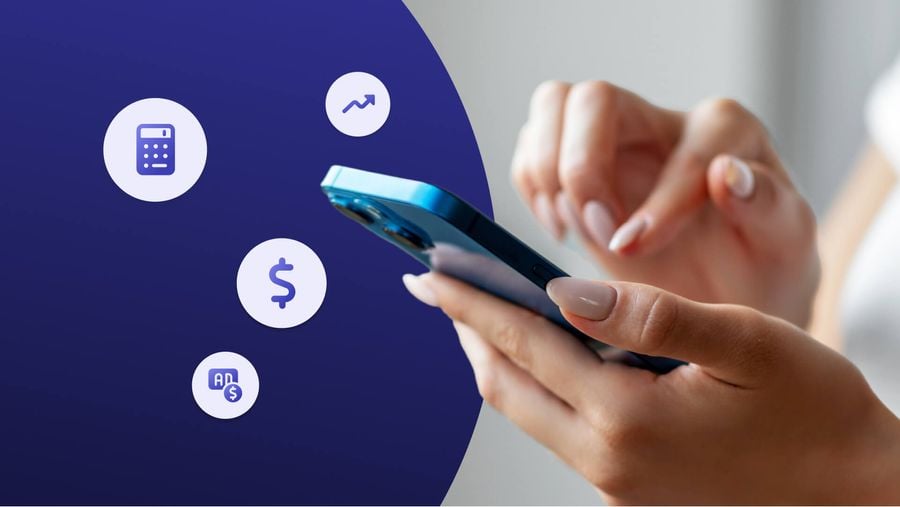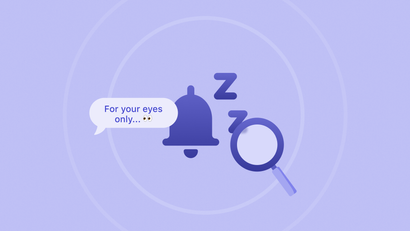What is CAC?
Customer acquisition cost (CAC) refers to the amount of money a company spends to acquire a new customer or user for their mobile app. Monitoring CAC over time ultimately helps apps optimize their marketing efforts and determine how to acquire new users in a more cost-effective and sustainable manner.
Why does it matter for mobile apps?
Understand CAC is important because it helps developers and marketers evaluate the effectiveness of their acquisition efforts, which typically include both app marketing and paid advertising campaigns. Tracking CAC helps markets understand how specific campaigns are impacting ROI, which ultimately allows them to make smarter, data-driven decisions about how to allocate their resources to have the greatest business impact.
How do you calculate it?
There are a few different methods of measuring total CAC. To get a complete picture, marketers must understand the value of each acquisition channel.
Paid Advertising Metrics to Track
Cost-per-Install (CPI)
This method involves monitoring how much an app spends on paid advertising and dividing that number by the amount of app installations directly resulting from those campaigns. For instance, if someone views an ad for a Dominoes app and decides to download the app from the Google Play store, that install would be attributed to the ad campaign that triggered their action.
Cost-per-Click (CPC)
This method entails tracking how much an app spends on paid advertising divided by the number of clicks that the ads receive. Although a click doesn’t always guarantee that an app will be downloaded, tracking clicks helps marketers evaluate how effective their ads are at driving traffic to their app. Tracking the relationship between clicks and app installs enables marketers to anticipate how many clicks they will need to earn in order to meet specific user acquisition goals and, in turn, how much money they will need to spend.
Cost-per-Action (CPA)
This method is more advanced than the other two and is especially relevant for apps with a “freemium” monetization model that rely on upsell opportunities within the app to generate revenue. As the name suggests, this method involves tracking how much an app spends on paid advertising divided by the number of specific actions that a user takes within the app, such as making an in-app purchase or renewing a subscription. Although tracking CPA can involve a bit more backend tooling, doing so provides a more accurate picture of the costs associated with acquiring a paying customer instead of a free user.
Analyzing Non-Advertising Marketing Spend
In addition to tracking paid advertising returns, evaluating marketing spend across other channels can help your understand total CAC. Social media, email, influencers, and web push notifications are all examples of other channels that can be used to acquire new users. To under how these channels impact CAC, apps must first identify what marketing channels are linked to acquisition efforts, determine the total amount of money spent on each channel over a given time period (including in-house costs like employee salaries), and track the number of users acuired through each channel.
The cost per acquisition (CPA) for each channel can be calculated by taking the total expenditure for each channel divided by the number of users acquired through that channel.
Adding up the CPAs of all marketing and advertising channels will give you the total CAC for your mobile app.
What’s the difference between LTV and CAC?
LTV, or lifetime value, refers to the total revenue a user will generate for an app over their entire lifetime, whereas CAC refers to the (typically one-time) cost of gaining that new user.
Although these metrics highlight different aspects of the mobile app user journey, examining the relationship between them allows app developers to forecast how profitable an app is likely to be. On a basic level, if the cost of acquiring a new user (CAC) is greater than the lifetime value (LTV) that user provides, then an app can't be profitable. On the flip side, if LTV is greater than CAC, the difference between those two metrics represents a profit margin.
To calculate and track that difference, app marketers and developers typically use what’s called a LTV:CAC Ratio, which is calculated using the following formula:
LTV:CAC Ratio = LTV/CAC
If the ratio of LTV to CAC is greater than one, then an app will likely be profitable. For instance, if the CAC for a fitness app is $20 and the LTV is $100, then the LTV:CAC Ratio is 5:1, indicating that the app is likely to be profitable. If, instead, the CAC was $100 and the LTV was $20, the LTV:CAC Ratio would be 0.2:1, which indicates an unprofitable app. A LTV:CAC Ratio of less than one is typically an indication that an app needs to rethink their advertising spend or targeting strategy and refocus their resources on improving user engagement and retention.
As an app grows and evolves, CAC and LTV will likely change over time. Tracking the relationship of these metrics throughout different growth periods helps developers and marketers optimize their acquisition and retention strategies and hone their marketing efforts.
How can Mobile Apps Improve LTV and Reduce CAC?
One of the most powerful ways mobile apps positively impact LTV and improve their LTV:CAC Ratio is by focusing on user retention. The longer that users stay actively engaged with an app, the more likely they are to make purchases and the greater their total LTV. For mobile apps, improving user retention is often a more sustainable and cost-effective strategy than focusing solely on user acquisition because acquiring a new user is typically more costly than retaining an existing one.
There are various ways to improve user retention, but the most effective strategies involve enhancing and personalizing the app experience. Creating a strong communication strategy is one of the most effective ways to improve long-term app retention, re-engage users that have churned, reward app loyalty, and encourage desired actions such as in-app purchases. Some proven engagement strategies include:
Implement User Re-engagement campaigns
Re-engagement campaigns target users that have downloaded an app but have not been active for a specific time period. Typically, these campaigns focus on re-igniting interest in the product and incentivizing users to return to the app. Check out these real-world examples of re-engagement campaigns in action.
Leverage Push Notifications
The app marketplace is incredibly competitive, and many of the most successful apps have an average 10-day retention rate of just 25 or 30 percent. Push notifications are an essential tool for mobile apps to keep users engaged and returning to their app daily. Although it’s possible to build this messaging functionality from scratch, leveraging a push notification provider is typically a much quicker, more scalable, and more reliable way to send personalized and automated notifications to users across devices, including Android and iOS.
Optimize App Onboarding
An app onboarding process is typically the first “touch” or experience that a user has with an app. As such, it can have a significant impact on user retention and LTV. App onboarding flows can help educate users about the UI to reduce friction, improve key feature adoption, earn user permissions to ensure a seamless app experience, and reinforce the value an app can provide. All of these benefits ultimately improve new user retention in a crictical period right after an app is downloaded from the app store.
For app developers that don’t want to build out this functionality, engagement solutions that offer in-app messaging provide the perfect means to create a dynamic app onboarding process without over-extending resources or distracting from product roadmap goals.
Implement Loyalty and Rewards Programs
Offering rewards or incentives for completing specific actions or meeting certain milestones within an app can be a powerful strategy to improve user retention. In addition to encouraging users to continue engaging with the app over time, loyalty programs help nurture a sense of loyalty and commitment to a brand. The most effective loyalty programs are highly personalized in nature and serve to enhance the user experience and instil a sense of community with users. Learn more about improving LTV by building an effective user loyalty program.
Get Started with OneSignal
OneSignal is designed to help apps send messages and seamlessly manage user communication across a variety of channels, including email, mobile push notifications, web push notifications, bulk SMS, and in-app messaging. Our platform is quick to set up and makes it easy to automate your engagement efforts and retain users without doing any development work. If you don't have a OneSignal account, you can create one for free — simply sign up and see for yourself!
Create a Free Account



